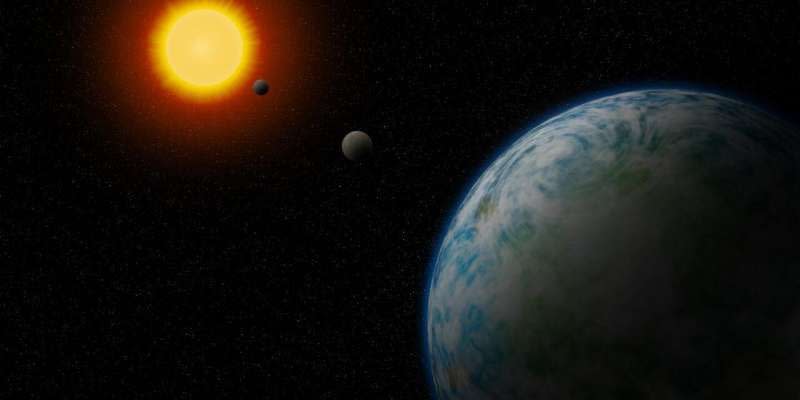Astronomers Have Discovered 2 Potentially Habitable Exoplanets in Nearby Star Systems

"Hearst Magazines and Yahoo may earn commission or revenue on some items through the links below."
Astronomers discovered two new potentially habitable exoplanets in nearby star systems.
The team also spotted a rare cold Neptune, which likely has frozen water on its surface.
The cadre of newly discovered exoplanets is close enough that researchers believe they'll be able to glean more information out of them through additional observations.
It's already been a big year for exoplanets. NASA's TESS telescope discovered its first potentially habitable planet in the habitable zone of a distant star, and now researchers have found evidence of a second exoplanet circling our closest stellar neighbor, Proxima Centauri.
One of these newly discovered worlds, GJ 433 d, is a Neptune-like planet orbiting the star GJ 433, which sits 29.5 light-years away at the center of the Hydra constellation. This exoplanet is roughly the same size as Neptune and has many of the same characteristics. Researchers believe that any surface water on the planet is likely frozen. Temperatures on Neptune can drop to as low as -353 Fahrenheit, so a "cold Neptune" would be unimaginably frigid.
"GJ 433 d is the nearest, widest, and coldest Neptune-like planet ever detected," astrophysicist Fabo Feng of the Carnegie Institution for Science, who led the team of exoplanet-spotting researchers along with Paul Butler.
The team also spotted two potentially habitable exoplanets, orbiting the nearby stars GJ 180 (40 light-years away) and GJ 229A (18 light-years away), among the group of five newly discovered exoplanets. The team also spotted a number of worlds that they suspect are exoplanet candidates and aim for more observations.
One of the two newly discovered planets orbiting within the habitable zone of their stars, GJ 229Ac, has a mass of approximately 7.5 times that of Earth, and an orbit of 106 days. Curiously the red dwarf star it orbits is accompanied by a smaller, failed brown dwarf star, which will provide researchers an excellent opportunity to study a unique star system.
The other potentially habitable exoplanet, GJ 180d has a mass 7.9 times that of Earth zips along its orbit in 122 days. Another sign that the planet may house life? GJ180d isn’t tidally locked, meaning the planet's nearby star distributes its heat evenly around the world.
Researchers say the discovery of these new exoplanets is thrilling because they’re orbiting stars relatively close to our own star system, meaning they’ll be easy to observe in the coming years.
You Might Also Like

